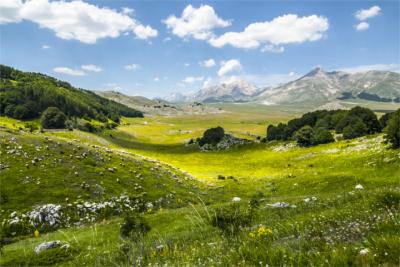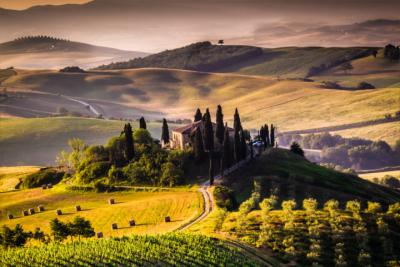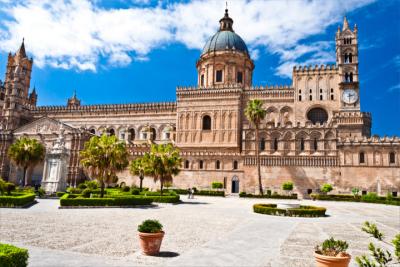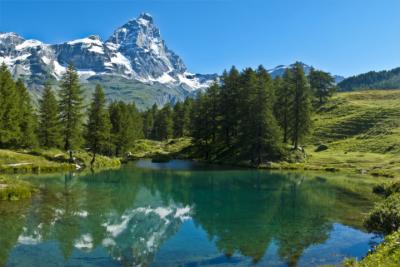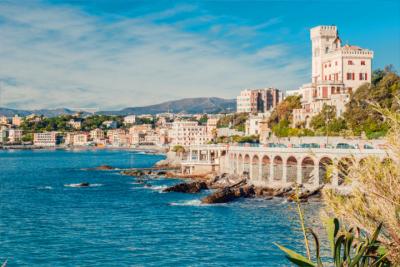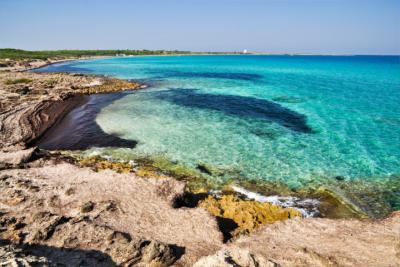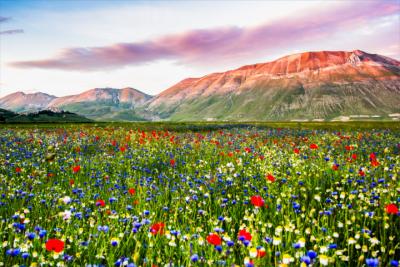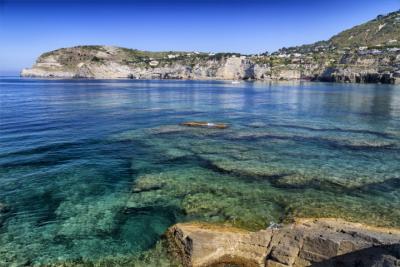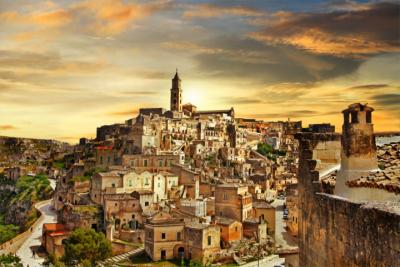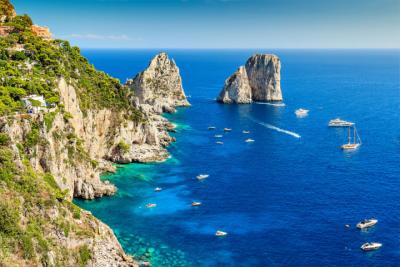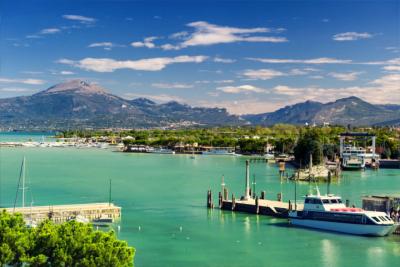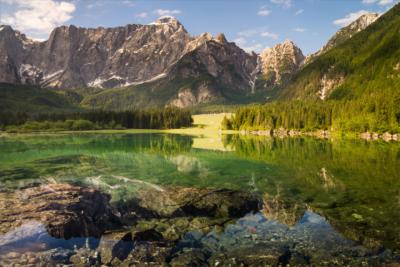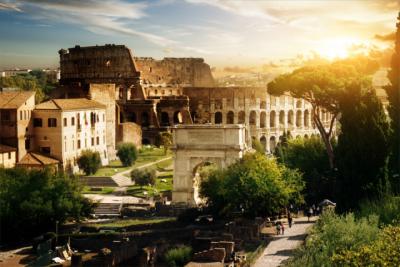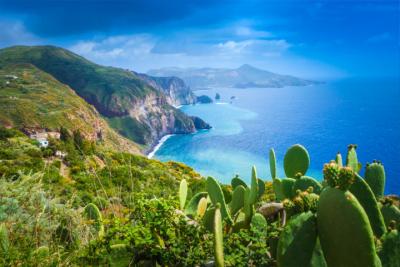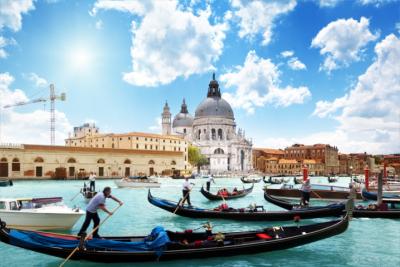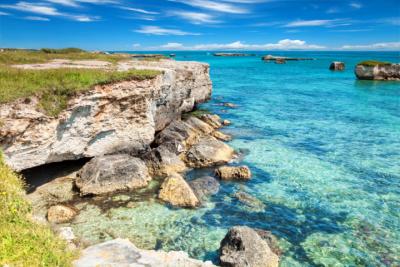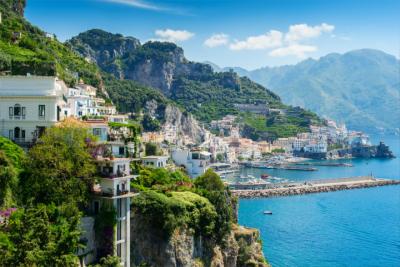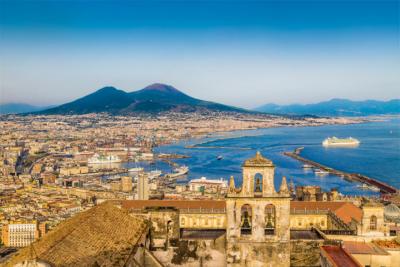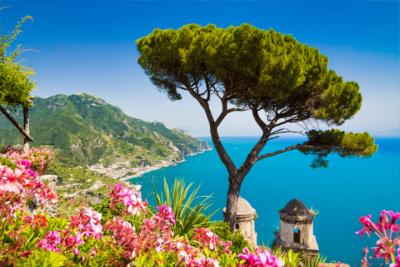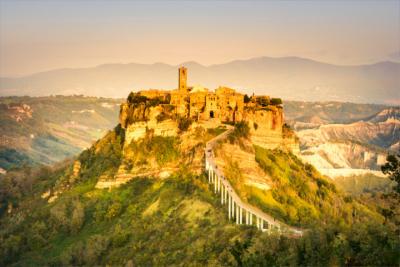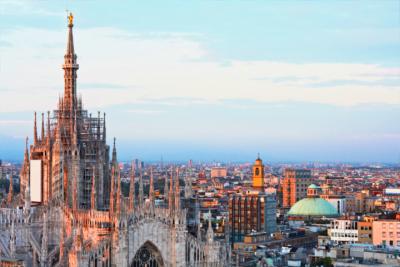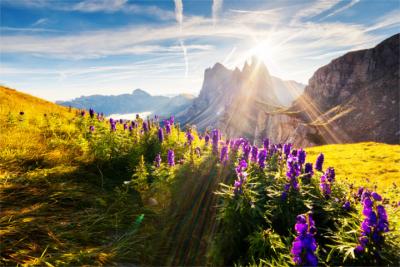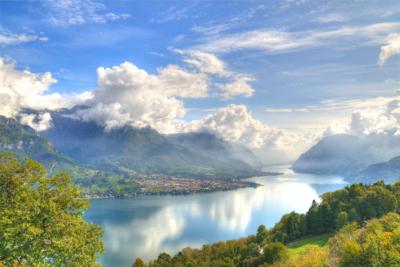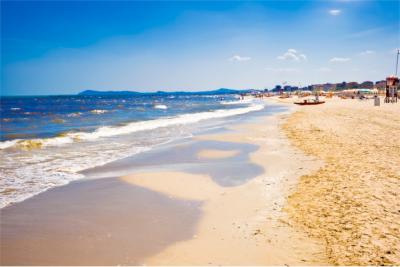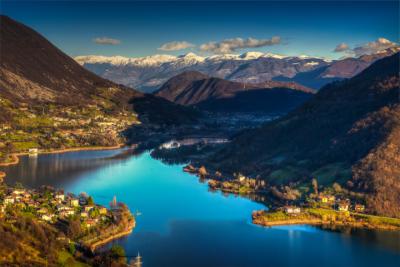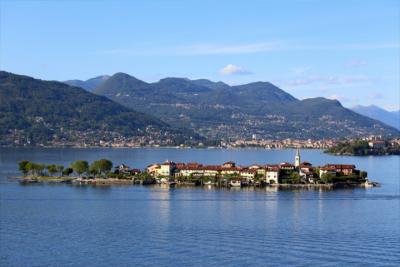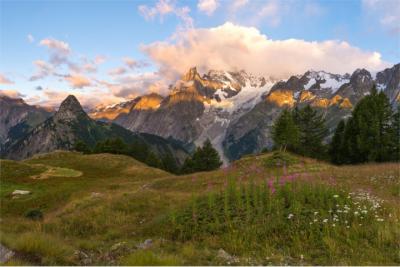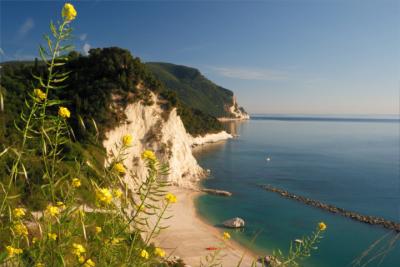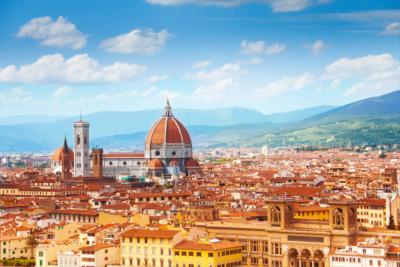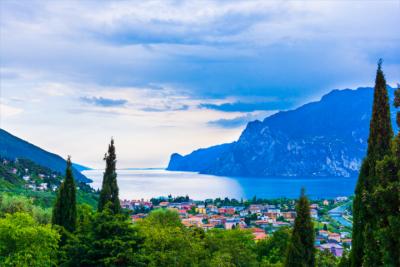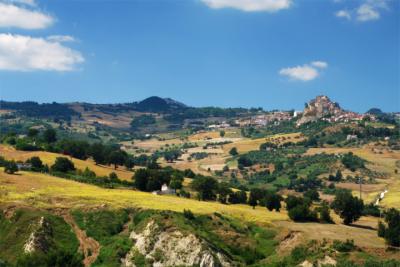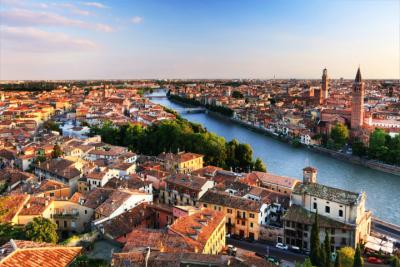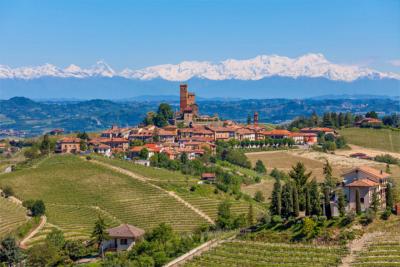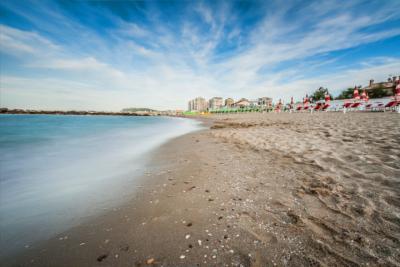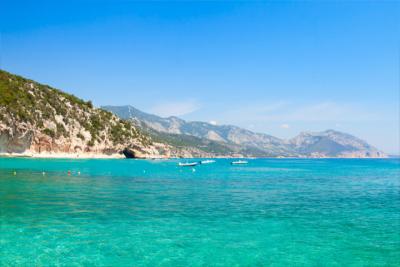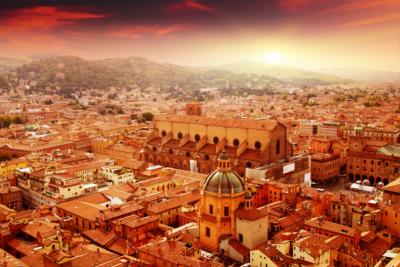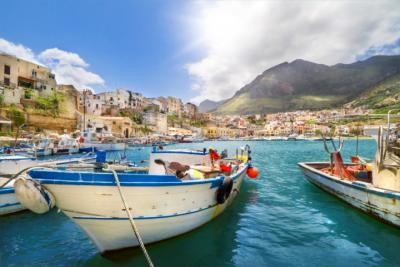Travel Offers
Travelmyne Featureprint
Distance
Basilicata – Ancient Heritage in Untouched Nature
Basilicata attracts visitors with its fascinating World Cultural Heritage site Matera. Worldwide unique cave settlements made of tuff are a special testimony to human history. In addition, the harsh coast at the Tyrrhenian Sea, the rock formations of the Dolomiti lucane and the pine groves of the Ionian coast make a lasting impression on travellers.
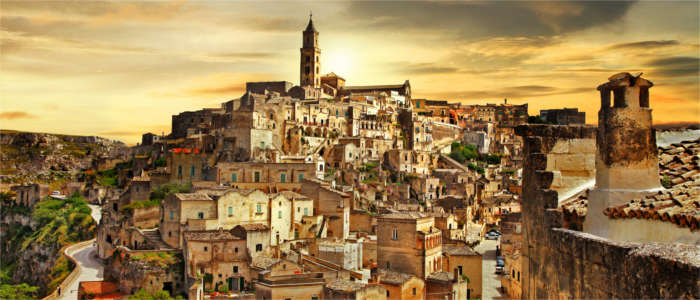
Geography - Between boot toe and boot heel
The region of Basilicata (formerly Lucania) lies in the south of Italy between the boot toe (Calabria) and the boot heel (Apulia). With an area of 9,990 km² and 606,000 inhabitants, it is relatively sparsely populated. The two provinces of Matera and Potenza with the capital of the same name (Potenza) separate the region. The latter lies at the Tyrrhenian Sea, while Matera is surrounded by the Ionian Sea. Basilicata is mainly characterised by mountainous and hilly landscapes which are decorated with small historical towns located at heights of over 1,000 metres. Although the region is dominated by Mediterranean climate, the temperatures at the coast differ from those in the mountainous areas. While it gets up to 30 ° C at the coast in summer, it is hardly warmer than 25 °C in the higher regions.

Nature - Mountains rich in limestone and a rugged coast
Basilicata's nature consists of mountainous, hilly and coastal landscapes. The coast of the Maratea at the Tyrrhenian Sea in the western part of the region and at the Gulf of Policastro is rugged and impresses with idyllic bays and crystal clear sea water between the beautiful cliffs. The Ionian coastal areas (35 km) in the south-east invite visitors to bathe and relax with their long sandy and pebble beaches as well as with their pine and eucalyptus groves. In the heartland, you mainly find wonderful rock formations, hills and valleys. The Dolomiti lucane, the tuff stone cliffs in the Gravina Valley and the Serra Dolcedorme (the highest mountain in Basilicata with 2,267 m of height) in the Pollino National Park are only a few of the many natural highlights. Especially the latter offers an impressive natural spectacle with its many gorges, rivers, streams, caves and limestone cliffs. With an area of 192,565 hectares, it is Italy's greatest national park and one of the largest nature reserves in the whole of Europe. Other worthwhile attractions are the magnificent Monte Vulture at Lago Monticchio, which evolved from a dead volcano, and the artificially created lakes Lago di S. Giuliano, Lago di Monte Cotugno and Lago Pietra del Pertusillo. Their scenic and lush vegetation is a special experience not only for lovers of nature but for all visitors.

Culture - Following the traces of the Romans, Greeks, Langobards and Byzantines
The name "Basilicata" dates back to the Middle Ages (10th century), to the years of reign of the Byzantines, who left their mark on the region beside the Romans, Greeks and Langobards. You find their traces in the world-famous City of Stones (Città dei Sassi), which has existed since the New Stone age and is considered one of the oldest cities on earth. The famous cave settlements (Sassi di Matera) of Matera are part of the World Cultural Heritage of the UNESCO and show the way of living of the shepherds and farmers in medieval times. The about 3,300 cliff dwellings were arranged in terraces in calc-tuff stone and only seem more impressive with the rock-cut churches Santa Luci delle Malve, San Pietro Barisano and San Pietro Caveoso. In addition, Matera has been the setting of several works of art. In the novel "Christ Stopped at Eboli" written by Carlo Levi, the protagonist spends time in Matera and Mel Gibson chose the city as one of the shooting locations for his film "The Passion of the Christ". Another shooting location was the nearby town of Craco, which is not populated any more and is another cultural asset from the Stone Age. Other history-charged sites are the Greek Temple of Hera in Metaponto, the town Maratea with its impressive statue of Christ, the Castle of Melfi and Castel Lagopesole as well as the capital of Potenza.
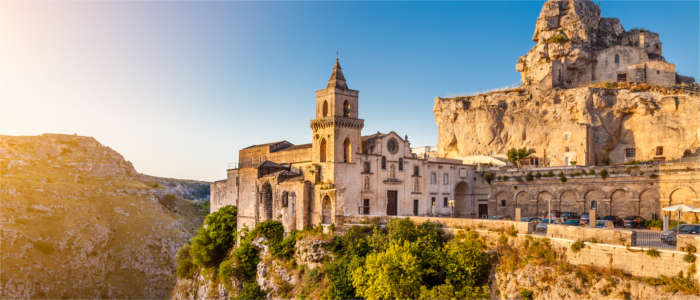
Experience - A simple cuisine and traditional art handicraft
Basilicata's cuisine is simple, aromatic and proves that delicious dishes can be made with a small number of ingredients. An important part of many local dishes are fresh, seasonal vegetables such as olives, tomatoes, hot peppers, potatoes and maize. They are used for the preparation of stir-fries (ciammotta) and vegetable stews (cialledda), for example. Bread is another element of the local cuisine. Two bread specialities are the panella (loaves of bread made from flour and potato dough) and pancotto (roasted slices of bread which are dunked into soup). In addition, a lot of lamb and pork is used in Basilicata. Well-known dishes are cutturiddi (lamb casserole), the fried head of a lamb as well as the spicy sausage salsiccia lucanica, which is often served as a meat dish to pasta. Rural and simple pastoral traditions also characterise the region's art handicraft. Local materials such as wood, clay, tuff stone, straw and rattan are used for the production of artistic everyday objects.

Activities - A paradise for active holidaymakers
Due to its wonderful mountainous and hilly landscape, Basilicata is excellently suited for hikes and horseback rides. You can also enjoy the breathtaking panorama on a cycling or mountain biking tour on one of the numerous mountain paths. The rugged rocks offer ideal conditions for mountaineers and climbers, while the mountain rivers invite holidaymakers to go kayaking and canoeing as well as rafting, white-water rafting and canyoning. Travellers who prefer leisure activities on and in the sea can go swimming, fishing, diving, surfing and sailing at the Ionian or Tyrrhenian coast. Furthermore, a boat trip is a great way of discovering the many bays and grottoes of the local coast. The Tyrrhenian Sea is a great destination for divers as it has a colourful and varied underwater world.

Information
Travellers can arrive by plane, car or train. Various airlines fly directly to the cities of Rome or Naples, from where you can continue your journey in a rental car or by train. The train is generally a great means of transport because going by train is cheap in Italy.
Remains of an ancient history, the mostly untouched nature of the mountains and coasts as well as simple and authentic pastoral traditions await holidaymakers in Basilicata. The region is the perfect destination for travellers who like to walk not only on mountain trails but also on the paths of the past and want to learn about culture and humankind.

